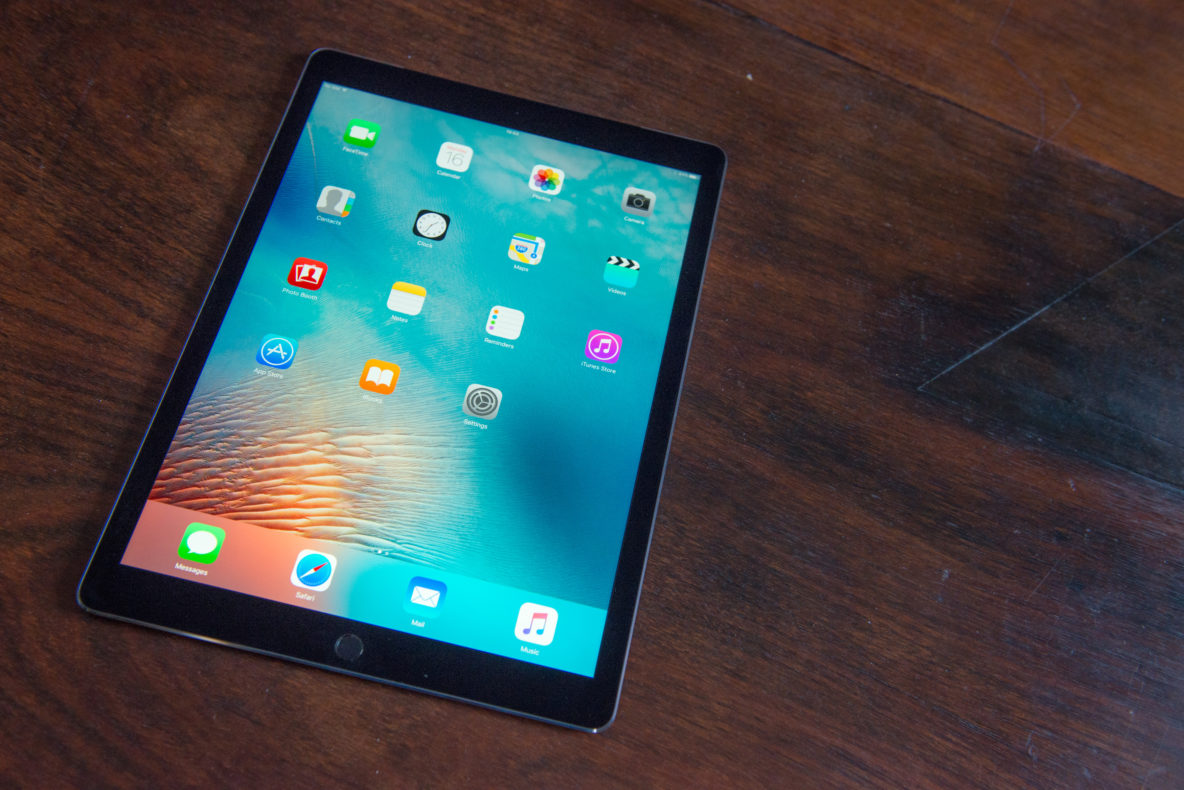Das Apple iPad Pro gibt es seit ein paar Tagen im Geschäft. Es ist groß, genau richtig groß, will man richtig arbeiten.
Musings on the Future of Digital Media – Software or Being connected
This is the third and last part of my series concerning my ideas on the future of digital media. After discussing the ’net in the first and the hardware to get access to it in the second installment, i will now try to cover the software part of connectedness. I have disabled comments for this post. For discussion of this and the other two related articles, please head over to wbf2010.at. Reopened comments. Software After having successfully established the possibility of getting connected with everybody at all times, software defines all functionality building upon this universal connectedness. Software tries to inscribe specific usage scenarios into itself, but it has to be continuously adapted because of users utilizing the software in ways not intended by it’s programmers in the first place. The way of the connected masses will always stretch the limits of published software, just as the connected few are the most powerful group structure for the basic innovation of functionality in the first place. Since all software is written in structured programming languages, written pieces of software should be treated like every other wirtten piece in every other language, especially when it comes to patenting. Therefore, software should be treated only by copyright laws and not by patenting laws. Social Media Social Communications and Collaboration is considered one of the top 10 strategic technologies for 2011 by Gartner. As such, it was not the hardest prediction to make, since Facebook now captured half a billion people, of which 50% log …
Musings on the Future of Digital Media – Hardware or Getting connected
Within the second part of my series on ideas regarding the future of digital media, i will try to take a deeper look on the hardware side of all things connected. In the first part, i have defined the internet as a digital universal transmission platform, which Kevin Kelly views as the ultimate machine mankind has ever built. Being connected to the ’net is imperative already and the pressure to be always on will become even stronger. But with what kind of device and for what purpose are we gonna be connected? Classifying Devices For the moment, four specific always connected device classes are to be defined: Phones Tablets Laptops Desktops These four classes can be parallelized in parts by a categorization provided in this article by Mark Segal on O’Reilly Radar. He defines devices by their portability as Wearables Pocketables Bagables Portables Wearables are smaller than phones – at least for the moment – and desktops no longer portable. Desktops could be considered as moveable. The less portable a device gets, less people will own one of these devices, as usage scenarios of Portables or Non-Portables will become more and more specialized. According to Gartner, 1.2 billion mobile phones were sold in 2009. Compared to the 306 million computers (laptops and desktops combined), portability has already won by far over functionality, but the latter is moving fast into the former. Individualization Additional individualization of entertainment will be driven by devices like tablets. Everyone can view the content she or he …
KEEP going
Mit KEEP, Abkürzung für Keep Emulation Environments Portable, hat mal wieder ein rekursives Akronym das Licht der Welt erblickt. Die Absicht hinter dem von der Europäischen Union mit etwa 4 Millionen € geförderten Projekt ist lobenswert: „Erhaltet die spielerischen Anfäge des digitalen Zeitalters“. Durch die Entwicklung einer umfassenden Emulationssoftware vergangener Hardwareplattformen soll die Basis für den fortlaufenden Erhalt von „abgelaufener“ Software geschaffen werden. Für einzelne Plattformen wie den Commodore 64 gibt es schon länger, vor allem durch die existierende große Fangemeinde, voll funktionsfähige Emulatoren für alle gängigen aktuellen Plattformen. Dazu kommen Programmbibliotheken wie c64games.de oder c64g.com und umfangreiche Fanseiten wie lemon64.com oder c64.com. Interessant ist, dass sich im Fall der Zugänglichmachung von altgedienter Software kaum jemand Gedanken über das noch immer gültige Copyright macht, während diese Diskussion im Contentbereich laufend an Stärke gewinnt. Immerhin läuft der urheberrechtliche Schutz von Software in der Schweiz 50 Jahre nach dem Tod des letzten Miturhebers. Dass Software in diesem Zeitraum längstens nicht länger von Relevanz ist, beweist die augenblickliche Entwicklungsgeschwindigkeit digitaler Produkte. Genaue Informationen zu den Zielen von KEEP gibt es auf deren About-Page.
Virus-induzierte Diskussionen
In den letzten Tagen kam es, wie kaum zu überlesen war, zu einer neuerlichen Diskussion zum Einsatz von Antivirensoftware unter Mac OS X. Die unten stehende Artikelliste gibt nur einen kleinen Teil der Beiträge wieder. Ausgelöst durch einen Support Artikel, der seit geraumer Zeit auf den Apple eigenen Seiten zu lesen war, flammte die Diskussion wieder auf, nachdem laut c|net zuerst Brian Krebs über diesen Artikel in seinem Security Fix-Weblog berichtet hatte und sich verwundert darüber zeigte, dass von Apple offensichtlich einen Schwenk bezüglich der Information seiner KundInnen zum Thema Antivirensoftware vollzogen worden war. Ausschlaggebend war für ihn der folgende, aufsehenerregende Wortlaut: Apple encourages the widespread use of multiple antivirus utilities so that virus programmers have more than one application to circumvent, thus making the whole virus writing process more difficult. Here are some available antivirus utilities: Darauf folgte eine Liste möglicher kommerzieller Lösungen zu dem beschriebenen Problem, Intego VirusBarrier X5, Norton Anti-Virus 11 for Mac und MacAfee VirusScan for Mac. Insgesamt in meinen Augen uninteressant, würde Apple nicht den strikten Marketingkurs verfolgen, dass Mac OS X eine solche zusätzliche Software nicht nötig hat, komme es doch mit allen notwendigen Mitteln zur Verhinderung ungewünschten Zugriffs auf den eigenen Rechner. Dazu liefert Apple einen ausführlichen eigenen Mac OS X Security Guide (pdf), der wiederum an einer Stelle das Wort Virus erwähnt: Root. Mac OS X (like most UNIX operating systems) has a superuser, named root, who has full permissions for access to all files on the system. That is, root can …
Coda 1.5
Ich habe gerade Coda gestartet, und gesehen, dass es – nach längerer Zeit – von 1.0 auf 1.5 upgedatet wurde. Coda ist das Webentwicklungstool von Panic, die Firma, die auch Transmit programmiert hat. Das feine an dem Progamm ist, dass sie alle notwendigen Tools in einem Fenster integriert und man ausgesprochen übersichtlich seine Sachen bearbeiten kann. Coda bringt natürlich die FTP-Engine von Transmit mit, integriert die Textengine von SubEthaEdit und gleichzeitig auch dessen Collaboration-Features, mit dem Update ein Subversioning, die Möglichkeit, Webseiten als „Bücher“ einzubinden, um diverse Dokumentationen schnell zur Hand zu haben, endlich einen Suchmodus über mehrere offene Dateien und vieles mehr. Ich arbeite damit, seit Coda auf den Markt gekommen ist. Und bin noch immer der Meinung, dass für Webentwicklung nichts besseres da ist. Für den Moment.
Mac’s Tools
Umfangreiche Aufstellung anschauenswürdiger Programme für den Mac, gesammelt und kommentiert vom Heise Verlag. Mac’s Finest, Teil 1 Mac’s Finest, Teil 2 Mac’s Finest, Teil 3

